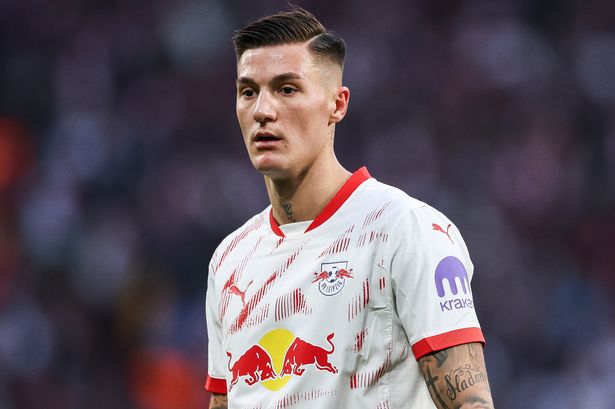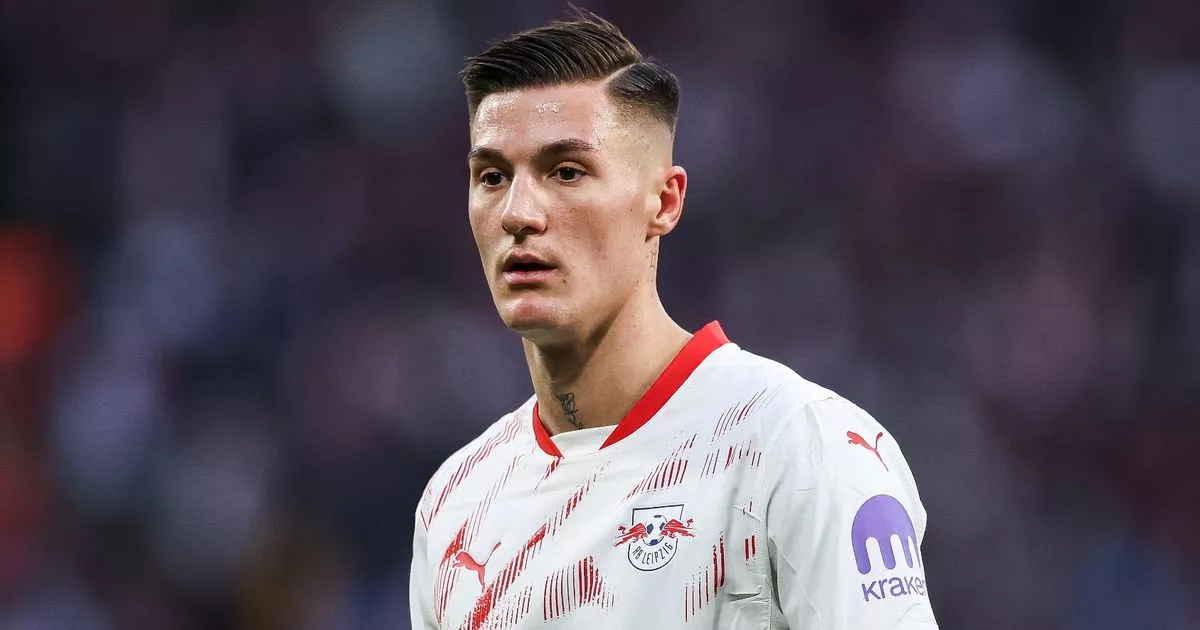Manchester United have been willing spenders in the transfer market despite some constraints Benjamin Sesko looks on during an RB Leipzig match(Image: Getty Images)
Benjamin Sesko looks on during an RB Leipzig match(Image: Getty Images)
Manchester United appear to be on the cusp of landing one of European football’s most prodigious young talents. Having submitted an €85m (£74.1m) bid for Benjamin Sesko on Tuesday, United now wait for RB Leipzig’s response.
They are in a battle with Newcastle United for the services of the 22-year-old Slovenian striker, with the Magpies having already seen one rebuttal from the German side before submitting another bid, but reports suggest it is the North West where Sesko sees his next move.
Having had a summer window that has seen Matheus Cunha and Bryan Mbeumo arrive from Wolverhampton Wanderers and Brentford for fees of £62.5m and £70m respectively, United have bolstered their attacking options and now look set to go one step further.
READ MORE: Rasmus Hojlund resigned to being forced out by Man United if Benjamin Sesko completes transferREAD MORE: ‘Crying out’ – Manchester United told to strike Newcastle deal after transfer announcement
A deal for Sesko at £74.1m including add-ons, with €75m (£65.4m) guaranteed, would take spending this summer to over £200m. For a club where the co-owner Sir Jim Ratcliffe has implemented mass redundancies over the past 12 months or so, and a club that in his own words would have been bankrupt by Christmas were it not for the cost savings, stating that there was “no money left”, it poses the question around just how the club can afford such an outlay.
Earlier this year it was revealed by The Athletic that United’s position when it came to the Premier League’s profit and sustainability rules (PSR), financial controls that limit losses to £105m over a three-year period but allow for losses attributable to depreciation, investment in infrastructure, the women’s team, the academy and community initiatives, was better than had been assumed.
The reason for that was that the PSR calculation done by the Premier League was based on the financial results of Red Football Limited and not Manchester United PlC, which produces financial statements quarterly due to it being listed on the New York Stock Exchange.
That meant that some significant expenditure unrelated to football activity could be stripped out and the losses were far less than the calculations that it was originally thought PSR would focus on for the PLC. In fact, the Athletic reported that United could lose more than £140m in 2024/25 and still be PSR compliant.
The Cunha deal, as detailed in the club’s third quarter financial report, was deemed to fall into the 2024/25 financial year for accounting purposes, and that means that last season’s spending on players was more than £340m, the third-highest single-season spend in Premier League history in a season when they finished fifth from bottom.
Taking out the Cunha deal, United have still committed to spending on Mbeumo and Sesko, deals of guaranteed sums of some £130m combined, with that capped at five years for amortisation purposes.
Amortisation is the accounting process used by clubs to book deals. The guaranteed sum of the transfer, not the add-ons, are spread over the length of the contract, capped at five years now by the Premier League and UEFA, with the book value of the player decreasing on the balance sheet each year of the contract ticking down until the fee is fully amortised.
The problem for United has been that amortisation costs are closing in on £200m and adding Cunha, Mbeumo and Sesko to the mix adds another estimated £38.5m to the amortisation costs on the balance sheet each year. That money has to be offset somewhere or it bleeds into losses.
Book value of some squad players will have come down another year, notably the likes of big-money signings such as Rasmus Hojlund and Leny Yoro, and that will mean the increase won’t be as sharp on the balance sheet.
But wages are another problem, and facing a season without being able to rely on lucrative sums arriving from competing in European football, the payroll at United will need trimming, and that is why Marcus Rashford’s exit to Barcelona on loan was so key, saving some £14m for the year in terms of salary. A good season in Spain will increase the chances of a good value to sell next summer and provide them with more willing buyers.
But they need to do more. Players no longer part of the plans, such as Alejandro Garnacho, carry a burden in terms of wage rather than amortisation charges, while the likes of Hojlund, who has signalled his determination to stay and fight for a place, would need to be sold for a high fee in order for the club to not be hit with an impairment charge, where the sale of a player was less than the remaining book value.
United can spend without fear of PSR breaches, although it should be instructive that the spending on talent now is designed to return them to Champions League football soon, because they cannot sustain what they do outside of it for a long period of time without causing significant financial damage. They will be mindful of the limits, but it won’t be potential issues with PSR that will be what really determines what they can do, it will be how they pay for things with actual cash.
United have a revolving credit facility total with multiple providers of some £300m. They have around £140m of that they can draw down on still, although with the interest that comes with doing that means that they would much rather sell playing assets to cash flow deals. But it is there if it is required in the short term.
There wasn’t a need to sell players before getting deals done in order to cashflow them, but it adds to the risk. If they don’t get some high earners out of the door and generate some player trading profit then it shifts the reliance on more borrowing, and that isn’t ideal.
But having received some sell-on money from the sales of the likes of Anthony Elanga, who moved from Nottingham Forest to Newcastle United this summer, they have had some extra cash arrive, but there will be a focus on getting some money into the building in the coming weeks.
The problem with that is that United have been such good payers for their players that it is hard to find them homes away from the biggest sides in the Premier League. European football, save for Paris Saint-Germain, Real Madrid and Bayern Munich, can no longer play the Premier League’s game when it comes to buying big players. The fees and wage demands are now too high, effectively closing the market off for many. United may find Saudi Arabia offers some hope as they can spend the big money, but it is the level of the league that can be off-putting for the players themselves.
United can still spend, but it isn’t without its risks. If they get Sesko done then the focus for the next moves will likely be getting some cash into Old Trafford to be able to put it to work for new additions.
